Peas for Baby-Led Weaning
Peas are a perfect first food — naturally sweet, soft, and packed with nutrients. They’re also one of my favorite early foods for babies, right up there with broccoli and avocado. Whether you’re pureeing, mashing, or serving them as a finger food, peas are a simple and versatile option for baby-led weaning. They’re one of my favorite early foods for babies 6 months and up!
Medically reviewed and cowritten by Jamie Johnson, Registered Dietitian Nutritionist (RDN), and Lauren Braaten, Pediatric Occupational Therapist (OT).
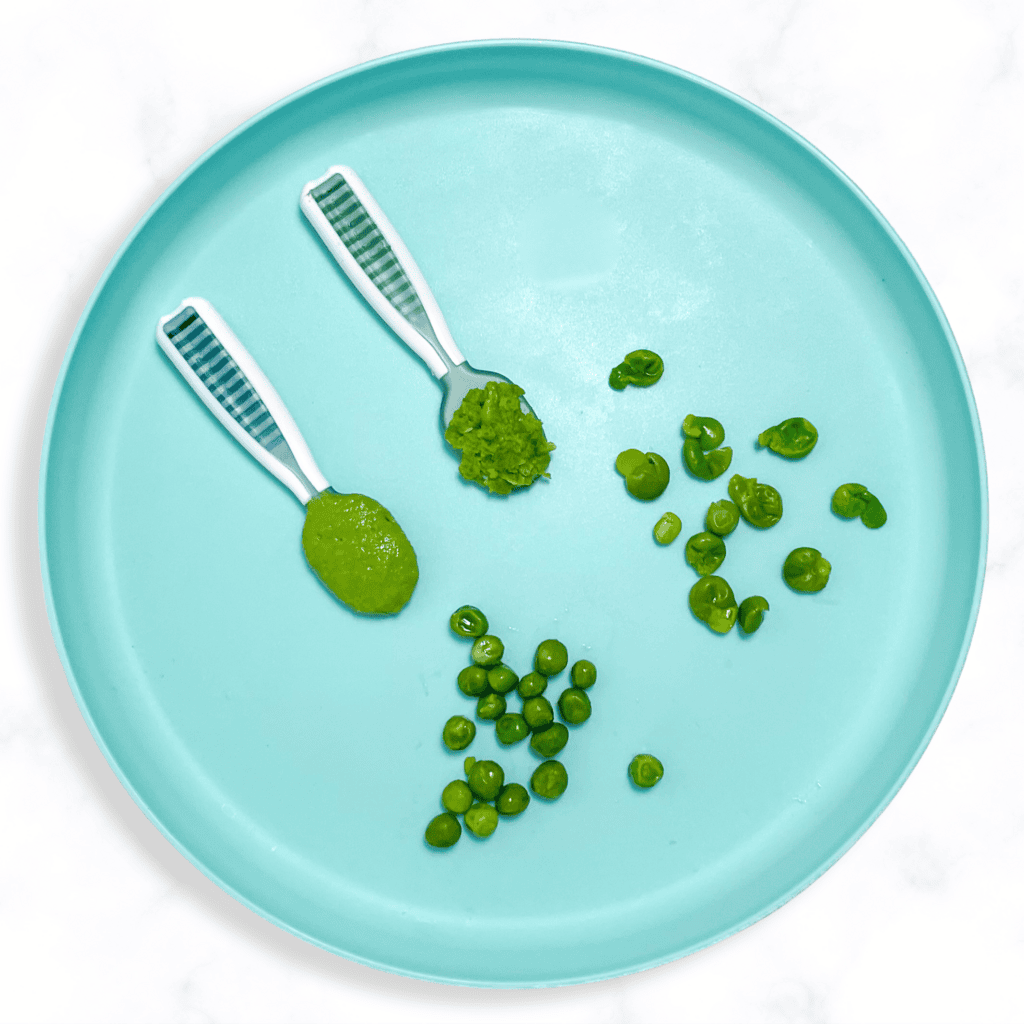
Peas for Baby-Led Weaning Video
Are you looking for a simple and safe way to serve peas to your baby?
Then, you’re in the right place!
Peas are naturally soft (especially when cooked well) and easy to modify depending on your baby’s age and stage. And while they may seem tiny, they can make a surprisingly big mess — so don’t be surprised if your baby ends up wearing more than they eat the first time 😅
Here are a few of my favorite ways to serve peas:
- Smooth pea puree for those early bites, either spoon-fed by you or served on a self-feeding spoon
- Mashed peas mixed with a little breast milk, formula, or even a drizzle of olive oil
- Whole peas gently smashed and offered on a preloaded spoon or tray
- Mixed into pasta, couscous, or quinoa for older babies exploring finger foods
Want to add a little flavor? A touch of fresh mint or a sprinkle of parmesan can make peas even more appealing (for baby and you!).
First time making homemade baby food? Then, I would suggest that you start by reading my very in-depth Complete Guide to Baby-Led Weaning. You can also check out my best-selling cookbook for even more information and recipes!
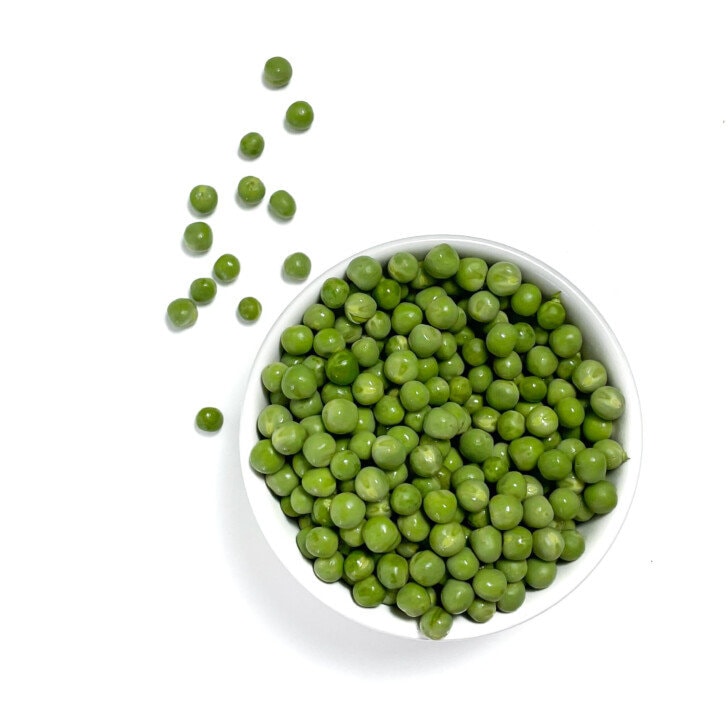
Spices to Add
Adding spices to your baby’s foods is a great way to introduce more complex flavors at an early age. In particular, adding a little bit of mint, rosemary, thyme or a squeeze of lemon juice will bring out that fresh taste in peas.
How to Prepare Peas for Baby-Led Weaning
There are several different ways to prepare fresh or frozen peas for your baby. Here are some of our favorite ways:
Sautéed
Heat a tablespoon or butter or oil over medium to high heat. Add about 2 cups of peas. Stir them around, still over medium-high heat, until they’re heated through and tender, about 3-5 minutes.
Steamed
Bring 2 inches of water to boil in a large saucepan with a steamer basket. Add peas to basket and cover and steam until tender, about 2-4 minutes.
Boiled
In a saucepan, combine 2 cups of peas with about ½ cup water. Bring the liquid to a boil with the lid off. Reduce heat, cover, and let your peas simmer for 3-5 minutes, or until tender.
Pea Puree: You can offer purees and still allow your baby to lead the way with self-feeding by offering the puree on a self-feeding spoon, by placing a few spoonfuls of the puree directly on the tray or in a bowl for your baby to dip their fingers into, or you can even use the puree as a dip for solid foods such a banana or piece of toast.
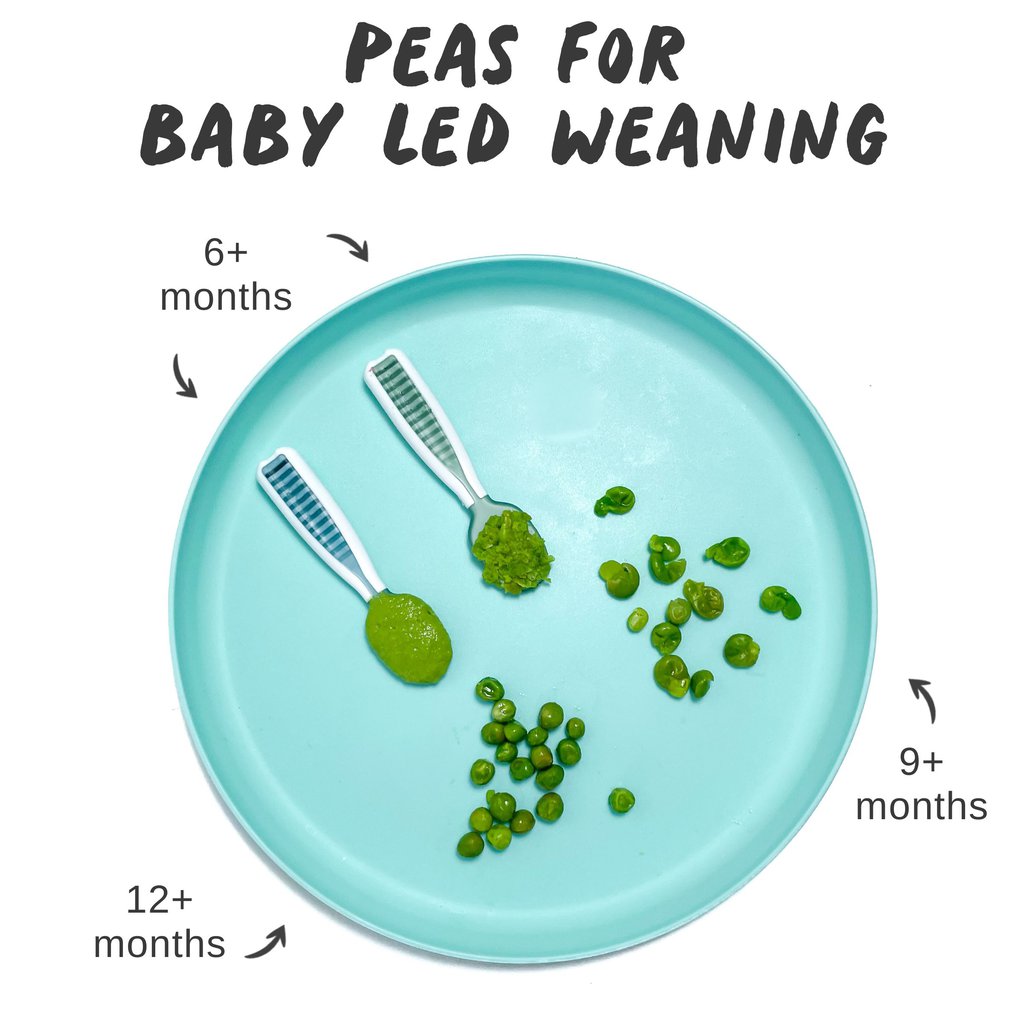
How to Serve Peas for Baby-Led Weaning
Peas can be a choking hazard for your baby, regardless of whether you are doing baby-led weaning starting at 6 months or during the finger foods stage at 9 months, so it is important to cook and serve them properly.
- 6+ months – Mashed or Pureed on Self-Feeding Spoon: Mashed peas have a thicker consistency so will be easy to stick to a self-feeding spoon. Or you can let your baby just dive their hands right in and scoop them up that way.
- 9+ months – Flattened: At 9 months, the pincer grasp is newly developing so flattened peas can give your baby some practice with it.
- 12+ months – Whole: By 12 months, babies will likely be able to handle eating whole peas, and be able to pick them up with a more developed pincer grasp.
Baby-Led Weaning Feeding Tips
- Frozen peas are great to have on hand. They whip up in a flash on the stove or in the microwave and make a great addition to almost any savory dish.
- If buying canned peas, make sure to grab the “no salt added” cans to avoid too much sodium.
- Peas can be a choking hazard due to their small, round size, so minimize the risk by smashing peas into a puree or flatten with the back of a fork or your fingers before serving.
- When serving flattened or whole peas, consider placing them directly on your baby’s highchair tray or table, instead of a bowl. This will encourage your baby to slow down when eating and avoid overstuffing their mouth with too many peas at one time.
- Pureed peas can be spread on strips of toast, teething biscuits or on their own for hand-scooping.
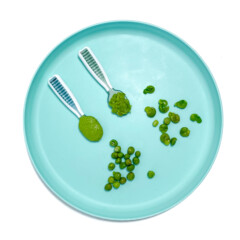
Get the recipe: Peas for Baby-Led Weaning
Ingredients
- 1/2 cup peas fresh or frozen
Instructions
- In a medium saucepan, bring 2 inches of water to a boil. Add peas to a steamer basket and place in the saucepan. Cover.
- Steam for 4-6 minutes or until tender. Let cool.
- Flatten with the back of a fork, mash and serve in an age-appropriate way.
Notes
-
- 6+ months – Mashed or Pureed on Self-Feeding Spoon: Mashed peas have a thicker consistency so will be easy to stick to a self-feeding spoon. Or you can let your baby just dive their hands right in and scoop them up that way.
-
- 9+ months – Flattened: At 9 months, the pincer grasp is newly developing so flattened peas can give your baby some practice with it.
-
- 12+ months – Whole: By 12 months, babies will likely be able to handle eating whole peas, and be able to pick them up with a more developed pincer grasp.
Did you make this recipe?
Tag @babyfoode on Instagram and hashtag it #babyfoode!

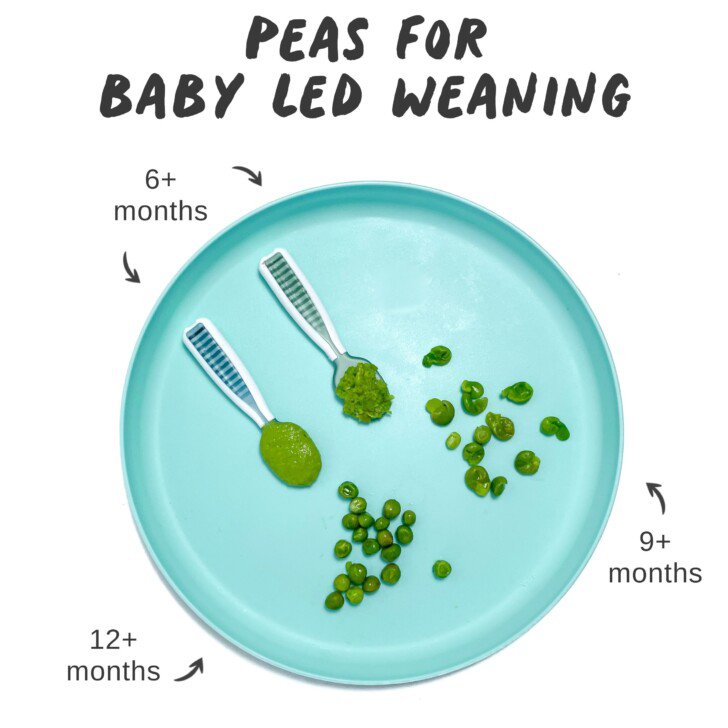
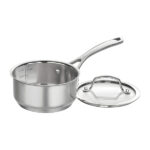
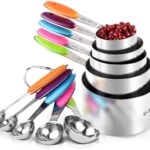


3 Comments on “Peas for Baby-Led Weaning”
I just have to point out peas are not a vegetable! While I don’t disagree with the health benefits you listed, I just think it’s important to label it accurately as a legume and not a vegetable. Loved the recipe though, very helpful!
My purée came out so chunky because of the skin of the peas. What did I do wrong? This happened to my green beans too.
Hi Kaitlyn! Boiled greens will suck up the water around it as well as break down the fiber, so you may get an inconsistent puree if you boil the green beans. You can sauté the green beans for 6-8 minutes in a little olive oil and then puree. Same for the peas. Happy holidays! xo, Michele